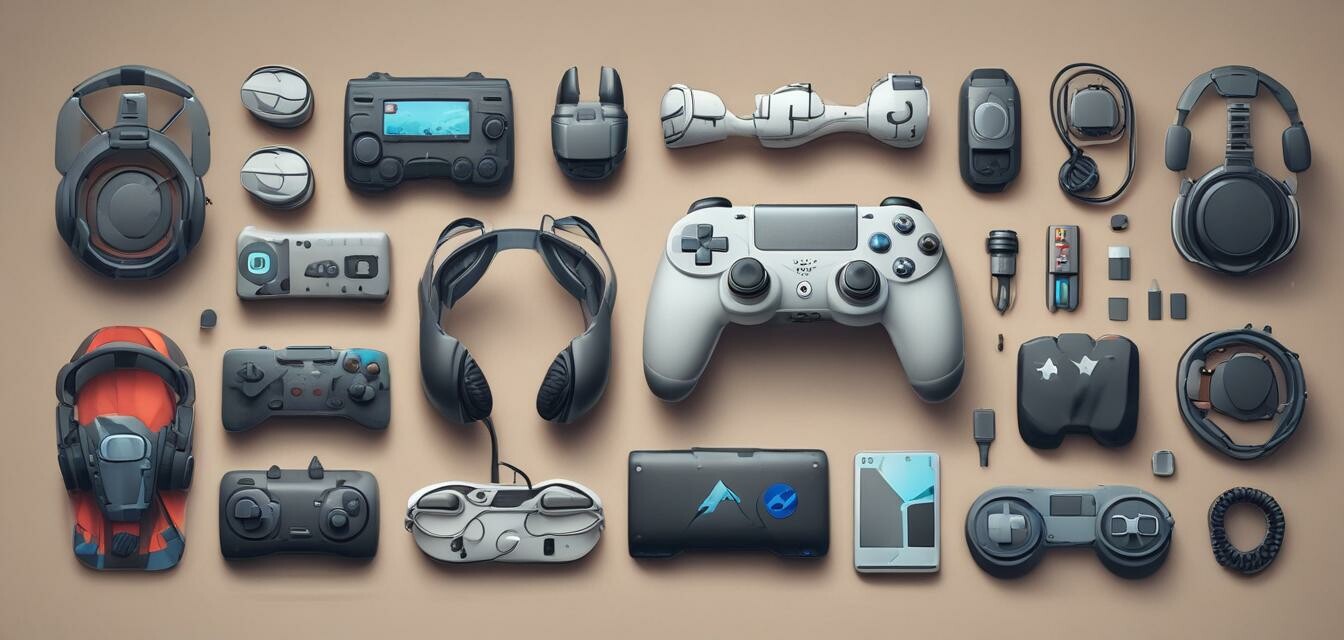
How social media is changing gaming accessories marketing
Key Takeaways
- Social media platforms serve as vital marketing channels for gaming accessory brands.
- Engagement strategies on social media can significantly boost brand visibility and consumer interaction.
- User-generated content and influencer partnerships drive authentic marketing.
- Tracking metrics on social media can provide invaluable insights into consumer behavior.
In today's rapidly evolving digital landscape, social media plays a crucial role in how brands connect with their customers, particularly in the gaming accessories market. This article explores the innovative strategies employed by companies to leverage social media effectively, driving both awareness and sales.
Understanding the impact of social media on marketing
Social media has transformed traditional marketing approaches, offering brands unprecedented access to their target audiences. Platforms such as Instagram, Twitter, and Facebook have become essential tools for engaging gamers and promoting accessories. Here’s how:
| Platform | Key Features | Audience Engagement |
|---|---|---|
| Visual storytelling, reels, and stories | High engagement through visuals and hashtags | |
| Real-time updates, threads, and polls | Direct interaction with tweets and retweets | |
| Groups, events, and ads | Diverse audience interaction through community building |
Influencer marketing: A game-changer
One of the most effective strategies in social media marketing is leveraging the reach of influencers. Many gaming enthusiasts follow popular gamers and content creators who often share their experiences with various accessories. By partnering with influencers, brands can:
- Tap into established audiences.
- Gain authentic reviews and demonstrations.
- Create anticipation for new product launches.
Engagement strategies that work
Effective engagement on social media can significantly enhance brand loyalty and sales. Here are some popular strategies:
- Create user-generated content campaigns: Encourage customers to share their experiences with your products through contests or hashtags.
- Host live-stream events: Organize events featuring gaming sessions or product launches, enabling real-time interaction.
- Utilize polls and questions: Engage users by asking for their opinions on new products or ideas.
- Share behind-the-scenes content: Showcase how products are made or the team behind your brand.
Analyzing social media metrics
To optimize marketing strategies, it's essential to track social media metrics. Observing data such as engagement rates, click-through rates, and conversion rates can offer valuable insights into what resonates with consumers. Here are vital metrics to monitor:
| Metric | Description | Importance |
|---|---|---|
| Engagement Rate | The level of interaction users have with content. | Indicates content relevancy and audience interest. |
| Click-Through Rate (CTR) | The percentage of users who click on a link. | Measures effectiveness of calls to action. |
| Conversion Rate | The percentage of users who complete a desired action. | Reflects the success of campaigns in driving sales. |
Real-life examples of social media success
Let’s take a look at some success stories that demonstrate how gaming accessory brands have successfully utilized social media:
- Brand A: Launched a user-generated content campaign that significantly increased their followers and sales by 40%.
- Brand B: Created an engaging series of live-stream events that saw a peak engagement rate of 80% during product launches.
- Brand C: Implemented targeted ads on Facebook that boosted their conversion rate by 50% in a single quarter.
Future trends in social media marketing for gaming accessories
The landscape of social media marketing continues to evolve, and several trends are likely to shape the future of gaming accessories marketing:
- Increased automation: Brands will likely invest in automated tools for more efficient content scheduling and performance analysis.
- Augmented reality (AR) experiences: Implementing AR in marketing can provide interactive experiences for consumers.
- Short-form video content: Platforms like TikTok are gaining popularity, making short, engaging video content necessary.
- More transparency and authenticity: Consumers are gravitating towards brands that promote transparency.
Pros
- Increased brand visibility and awareness.
- Ability to directly engage with consumers.
- Authenticity through influencer partnerships.
- Real-time feedback from customers.
Cons
- High competition for audience attention.
- Negative feedback can spread rapidly.
- Requires constant content generation.
Conclusion
Social media has transformed how gaming accessories are marketed, providing brands with innovative ways to engage their audiences. As these platforms continue to evolve, businesses must adapt by utilizing effective strategies that foster engagement and build community. By closely monitoring metrics and staying ahead of trends, gaming accessory brands can enhance their marketing efforts and drive success in an increasingly competitive environment.